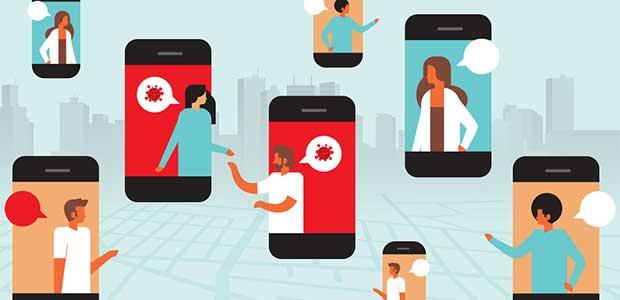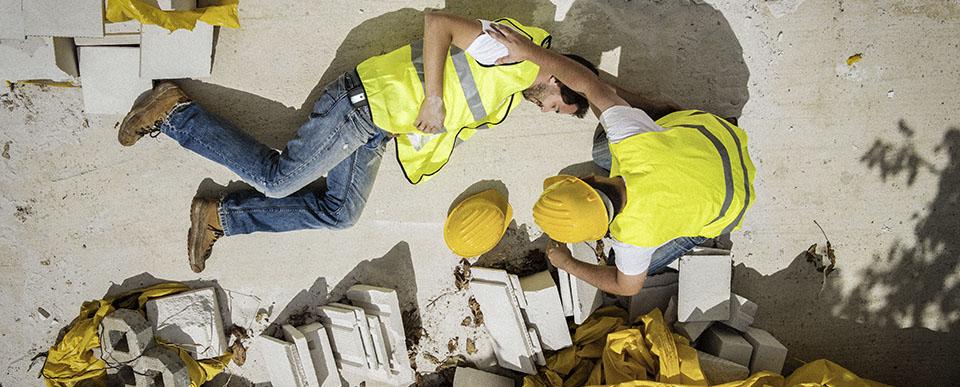
By cuterose
It's Time to Get Real with Safety Technology
There is a reason why people gather at tradeshows or events whenever a presenter is demonstrating a wearable. Much like a scene straight out of a science fiction movie, there is a coolness factor to wearables. And manufacturers–at least those committed to the digital transformation–can easily see the potential, especially as they work to make manufacturing environments attractive to the next generation.
Of course, there has been a cloud of issues around wearables–comfort, safety, need for special development skills, etc.Unfortunately, these issues have served as roadblocks or in some instances decimated the investments into costly single application gadgets. However, the reality is that not all wearable devices are created equally.
RealWear difference
As a manufacturer of totally hands-free, head-mounted wearable computers, RealWear provides an assisted reality device designed for use in industrial applications. RealWear is not attempting to display holograms or stereoscopic holographic images, especially considering the safety imperative for industrial workers.
“We want to enable workers to keep their cognitive attention in the real world because where they are often in dangerous situations working around machinery, electrical cables or other items operating within the environment creating potential hazards,” says Sanjay Jhawar, president of RealWear. “We give the user something that feels like a seven-inch tablet hovering in space at arm's length, but only occupies about 20% of the field of view. The result? The user’s brain is largely in the real world with the ability to see unobstructed with both eyes.”
Conversely, mixed reality devices place a display over both eyes superimposing holograms on top of the real world. The brain needs to work to understand how virtual objects are supposed to be located from a depth perspective. “This is difficult because your brain isn't exactly getting all the same cues that it would get from the real world,” says Jhawar. “There's eyestrain involved. And there's quite a cognitive effort to focus on those types of systems, which tends to remove the user’s attention from the real world.”
Teams integration
In its pursuit to fully integrate headsets into existing work environments, RealWear has understandably worked diligently with each of the video collaboration providers to create tools designed to capitalize on what its headsets provide. However, collaboration efforts intensified in March 2020, when Microsoft announced the availability of its customer preview of Teams for the RealWear system, specifically engineered with a hands-free user interface.
With Teams on RealWear headsets, industrial workers can use both hands for complex work procedures while remotely collaborating with subject matter experts wherever they are in the world including starting a remote meeting simply using their voice.
When working in dangerous environments, the use of both hands is critical for safety and effectiveness. These workers increasingly require access to a screen to gather information or collaborate. With RealWear’s noise cancellation technology for voice commands combined with an adjustable micro-display screen running Android, RealWear’s HMT-1 is purpose-built for safe collaboration and knowledge transfer at the edge.

The Workband is a new mounting option for RealWear HMT-1, when hard hats are not needed.RealWear Workband
Accessing an expert. RealWear enables an expert to see what a user sees – enabling them to provide advice to the field worker or someone on the plant floor. “They can collaborate with them including sharing documents or drawings into their field of view,” he says. “The RealWear device could also allow the expert to see the alarm code the field tech or machine operator sees, and then provide a reset procedure.” Ultimately, providing collaborative access to remote experts allows people who may not have training on a specific piece of equipment to still be useful.
Bringing instructions to life. Guided work instructions can provide knowledge in the form of step by step instructions, which can include text, diagrams, and video clips enabling users to follow along as they watch the instruction. Using voice commands to zoom in and easily see detail, all while still being able to look at what is in the physical environment.
Manufacturers can also localize these documents by generating and affixing a QR code to relevant pieces of equipment. When employees scan the QR code the device brings up the specific page of the specific document that relates to the item they are looking at in the real world. It is a matter of taking digital information the company possesses, and virtually attaching it to physical assets that we have machines and doing so in a way that's very easy to use, doesn't require new software development, 3d modeling and holographic computing.
IoT visualization. Production environments have quickly become data factories. RealWear can collect the data feeds off plant floor assets such as temperatures, pressures, flow rates or whatever else might be important within a specific environment. When combined with an existing IoT environment, RealWear can serve as wearable version of the control room dashboard, enabling plant floor personnel can interact with those assets. “This allows you to do more with fewer people and do more remotely because you can take actions without having to go to the machine,” he says.
Time-sensitive training. Using RealWear for training is a great way to have employees learn new tasks from experts. Consider, for instance, a ventilator manufacturer working with an aerospace manufacturer to ramp-up the supply of ventilators to address the ongoing crisis. Although aerospace employees are highly skilled, they have never produced ventilators. They still need to hit the ground running and make high-quality medical equipment–at scale and doing so correctly the first time. If the ventilator manufacturer makes a ventilator while wearing the device, they can record a video.
“It does not take much to turn the video into step-by-step instructions, adding some annotations, text, and diagrams. The aerospace workers can simply follow along,” he says. “Getting quality products from a previously untrained workforce is very much enhanced by that capability, and it means that you kind of capture once and then publish to many others.”
Jhawar tells IndustryWeek there are a handful of pandemic-specific use cases that fall outside the normal realm. For example, telemedicine instances have arisen where semi-retired doctors assist nurses in treating chronic patients. No one wants to put a vulnerable older doctor in front of coronavirus patients. However, equipping a nurse with a headset as well as the proper PPE enables video consultations.Or, by adding a thermal camera attachment to the RealWear device, it’s possible to help screen patients who need a more detailed assessment based on whether they have a higher temperature than somebody else. “It may not be highly accurate as a medical device, but it's enough to screen people who are okay versus those needing more,” he says.
Navigating the new normal
As the pandemic’s impact on industry became a reality, the RealWear team devoted significant effort to embolden its self-service materials enabling customers to train their own people on how to use the devices successfully and quickly, ensuring that they could scale their rollouts faster. “We've created more videos, more granular training materials,” he says. “We've also built-in self-assessments where after each session, customers need to get 80% on a quiz before advancing.”
Having a well-utilized wearable solution capable of empowering collaboration can play a key role as organizations deal with remote work situations. For instance, connecting vendors to the factory, field service workers to customers or even the experts to the apprentice continuity.
How well organizations embrace these technologies could have a lasting impact on what could become the new normal for the workforce. After all, everyone is learning how to become power users of these remote tools.
“We're all learning how to do more than just jump on a video call. We are learning how to share videos, how to use chat in much more sophisticated ways, we're learning how to separate groups connected to our SharePoint system,” he says. “This is all becoming part of the cultural transformation, which is further preparing the ground for digital transformation. When we all get back to the office, we're all going to be so much better at working effectively whether we're in or out of the offices with remote teams. Businesses are going to be that much more resilient when the next crisis arises.”









